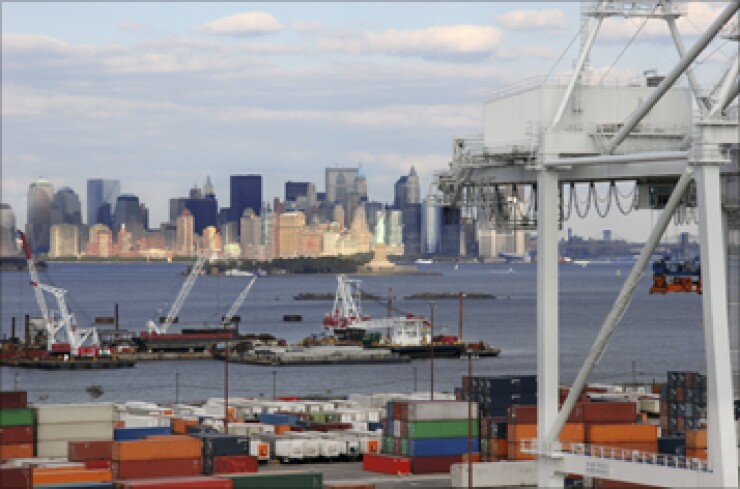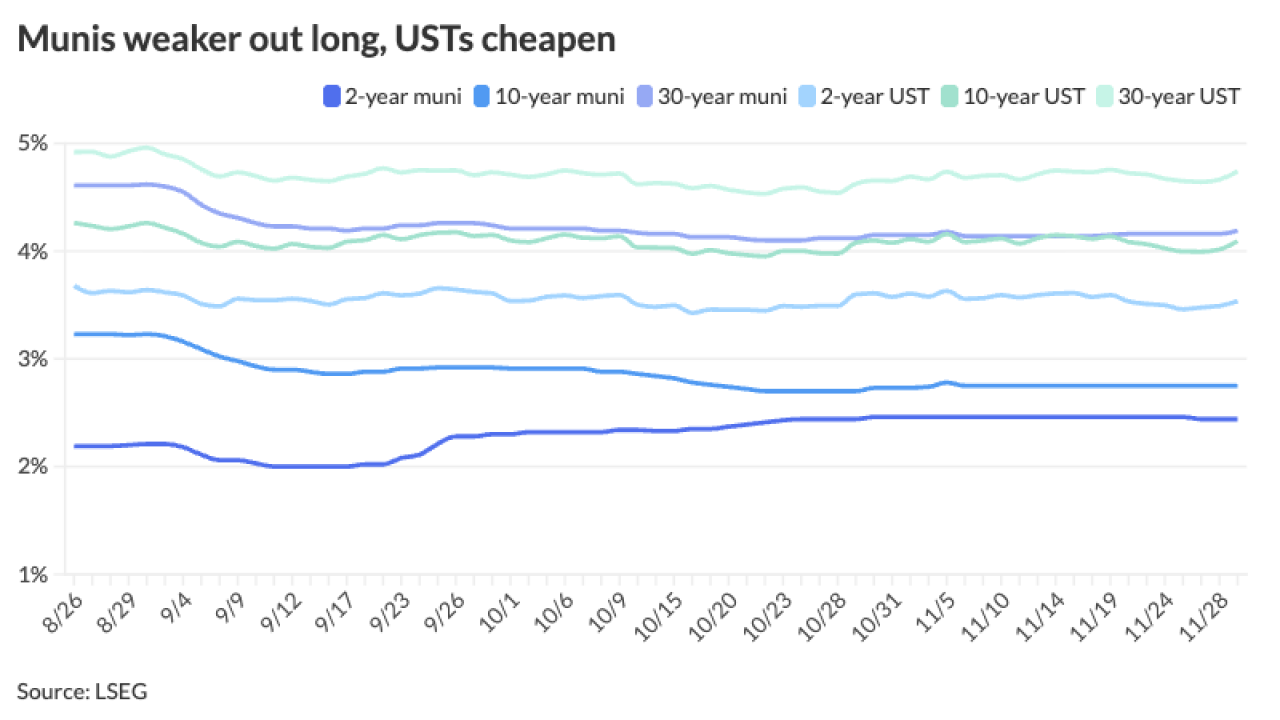
The Port Authority of New York and New Jersey is considering a freight transportation program that may reduce toll revenue from truckers that helps support its roughly $19 billion of bond debt.
The Port Authority and Federal Highway Administration released a draft environmental impact statement in mid-November for its planned Cross Harbor Freight Movement Project, the CHFMP, providing both water board and rail-based options for moving cargo across the Hudson River and New York Harbor.
The possibilities — which range from an enhanced railcar float operation, a truck ferry or a rail tunnel — come as the Port Authority estimates freight movement will increase by 37% over the next 20 years.
Depending on which alternative is chosen, user fees and increased passenger traffic may offset the loss of toll revenue from truckers.
Cash tolls on Port Authority-operated bridges and tunnels for trucks will be as high as $102 for trucks and $13 for cars starting on Dec. 7, when new rates take effect.
The authority outlines in its CHFMP draft study report released on Nov. 13 how each alternative offers the potential to generate revenues in the form of user fees, tolls or charging to move each railcar and container.
The report also says that a rail tunnel with truck access would be the "most favorable" alternative in terms of creating volume to help with a "cost-versus-revenue ratio."
The Port Authority estimates costs ranging from $100 million to $600 million for five possible options for expanding railcar float operations.
A bolder initiative that would involve building a four-mile-long underwater tunnel for freight trains and possibly trucks would range from $7 billion to $11 billion, according to the agency, which has no funding in place yet for the CHFMP in its 10-year capital plan.
Port Authority officials say that while financing any potential cross-freight plan is "very preliminary," there is hope that some federal and private-sector funds could be used.
According to a 2013 budget summary, the port agency receives the majority of its revenue from facility rentals, with tolls placing second followed by aviation fees and parking.
Moody's assigned an Aa3 rating to the authority in early October for $650 million of consolidated bonds, citing "needed rate increases" on tolls for its stable outlook. The agency had $19 billion of outstanding debt last month, according to Moody's.
While the CHFMP could reduce congestion and lead to an increase in the number of cars paying tolls on bridges and tunnels, a loss of trucks, which pay higher rates, could mean a net loss of revenue, according to Jonathan Peters, a finance professor at the College of Staten Island.
However, even if the net revenue impact is negative, Peters says the CHFMP is long overdue and would be a major positive for the region.
The agency first began seriously reviewing how to address freight movement problems in 2009 due to worsening traffic conditions resulting from an almost total reliance on trucks to transport goods.
"It might be a loss for the Port Authority but it would be a benefit for the region in terms of mobility," said Peters, a research fellow at the University Transportation Research Center at City College of New York. "It really just comes down to who is going to pay for it."
The Port Authority was formed in 1921 with the purpose of constructing a rail tunnel to replace a water transport system across New York Harbor. Nearly a century later, however, the CHFP project has never gotten off the ground and the ability to adequately transfer goods over waterways connecting New York City and New Jersey has been limited.
Port Authority executive director Pat Foye emphasizes that the CHFMP could help control costs associated with bringing freight into New York City and New Jersey while also helping economic growth in both areas by making it more desirable for motorists.
"Congestion on the highways in both states is a current drag on economic activity and investments and job creation," said Foye. "The alternatives are going to be seriously studied."
One of the 11 possibilities the Port Authority is studying with the draft study would be taking no action at all. Since late 2008, the agency has owned and operated a cargo float operation called New York-New Jersey Rail LLC housed at Greenville Yard in Jersey City, with future upgrades to the facility planned.
However, there are limited options for transporting freight across the Hudson River with the only other rail link across the waterway located 100 miles north of New York City and operated by CSX.
Progress on a cross-freight plan is long overdue, according to Jameson Doig, a visiting professor of government at Dartmouth College who authored a 2001 book on the Port Authority called "Empire on the Hudson."
He added that the chief concern is how to pay for any of those potential options.
"It is a very important issue to address, but you need to do it in a way where it doesn't become a big loss and where it is sufficient," said Doig, a professor emeritus at Princeton University.
Rep. Jerrold Nadler, D-N.Y., has pushed for a CHFMP initiative since his days in the New York State Assembly three decades ago, and said he hopes the environmental impact study spearheaded by the Port Authority will help resolve the region's growing problem with inefficient transfer of goods.
In a release on Nov. 13 he said New York is the only major city in the world not connected to the country's national freight network and as a result, more than $1 trillion worth of freight per year enters the city's borders almost entirely through trucks driving over the George Washington Bridge.
"The Cross Harbor Rail Freight Tunnel project, which I have supported for more than 30 years alongside a large and growing coalition of governmental, business, labor, transportation, and environmental leaders, would finally connect Brooklyn, Queens, Long Island, Westchester and Southern Connecticut to the national freight-rail grid, profoundly improving the movement of goods throughout our region," Nadler said in a statement.
"It will remove thousands of trucks from our clogged roadways, and that will reduce pollution, reduce the cost of goods and the cost of doing business, grow jobs, and make us all safer by both ensuring easier movement of emergency vehicles and securing an additional route by which we can get vital goods into the region, should our primary route be compromised."





